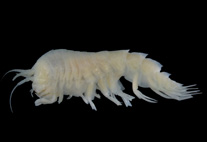Abstract
Pachycheles chubutensis Boschi, 1963 and Pachycheles laevidactylus Ortmann, 1892 are species with a distribution restricted to rocky shores in southeastern America, that share a troubled taxonomic history. Morphological characters overlap and identification can be imprecise, when both species coexist in the same environment. Due to these partly unsolved species demarcations, the present study addresses the taxonomic status of P. chubutensis and P. laevidactylus based on morphological comparisons and on 16S mtDNA and H3 nDNA sequences. We found out that morphological traits of chelipeds (pattern of carapace granulation, number/shape of teeth on the anterior margin of carpus and presence of setae on carpus and propodus) are reliable characters supporting the separation of the species. Molecular data based on two partial gene fragments (16S and H3) show separation among representatives of these species in two different clusters. Our comparative investigation shows that combined evidence distinguishes P. chubutensis from P. laevidactylus, but they remain closely related species. Forthcoming research focused on adding representative taxa for the combination of molecular and morphological information of the genus Pachycheles will investigate the positions of these two species within the Pachycheles group and help to clarify the enigmatic status of this genus in the family Porcellanidae.

